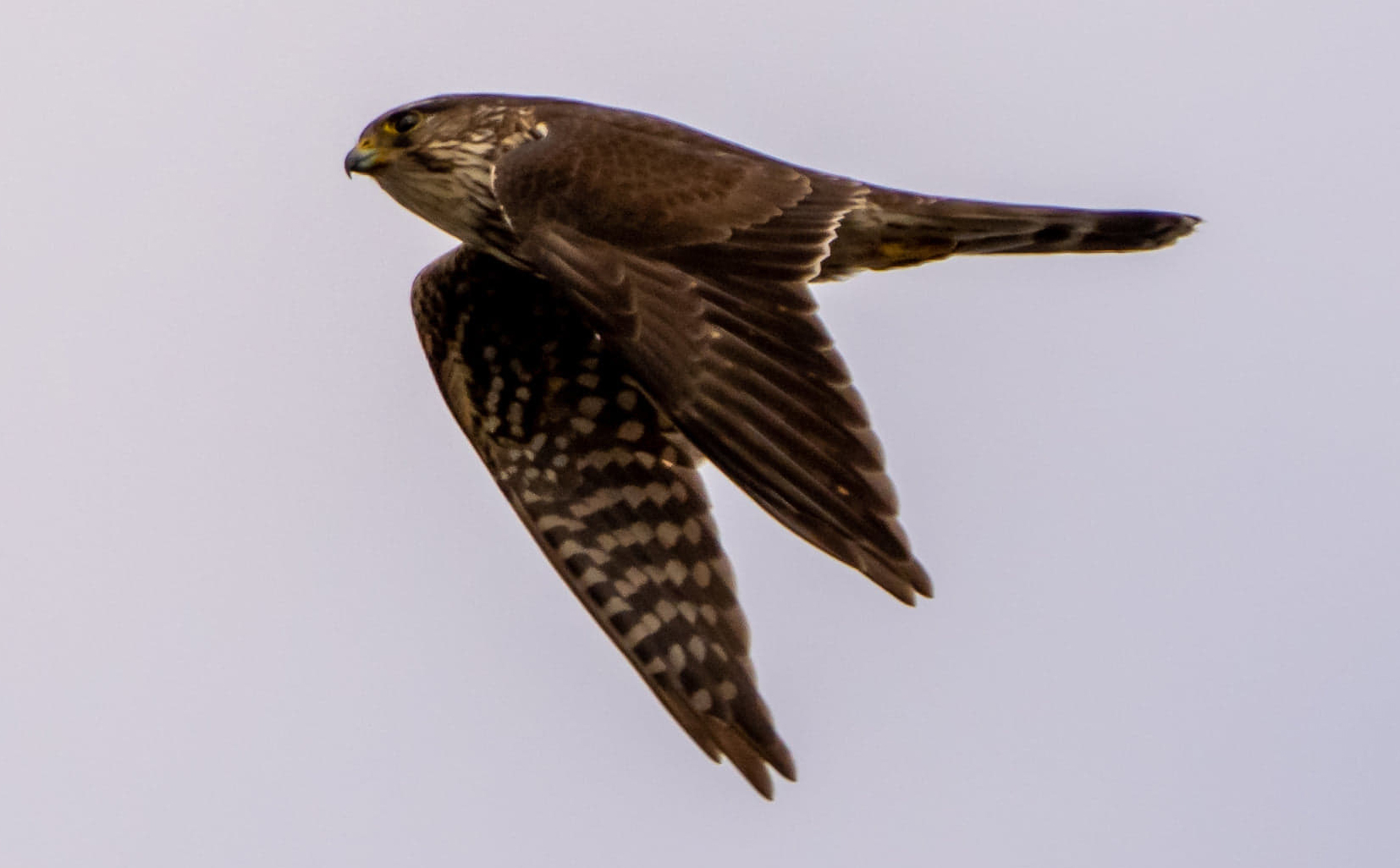
By Charles Frisk
Correspondent
As my wife and I were enjoying morning coffee in the backyard we were entertained by the sight of two red-tailed hawks soaring high above.
That got me thinking about the number of bird species that have moved into urban areas in my lifetime.
Some of these are species that had been driven close to extinction by human activity and are now recovering.
Others are species that were always common in rural areas and are now adapting to urban life.
There are at least two nesting pairs of peregrine falcons in Greater Green Bay.
The peregrine had been extirpated from Wisconsin due to the use of DDT, shooting and loss of habitat.
When DDT was banned in the U.S. in 1971, peregrine populations began to recover.
Shortly after, the U.S. Fish and Wildlife Service and the Wisconsin Department of Natural Resources, under the directives of the Federal Endangered Species Act, launched a program for the recovery of the fastest bird in the world.
Peregrine falcons had historically nested on inaccessible rock ledges on the sides of cliffs, and when they dive for food they can reach speeds of more than 200 mph.
The biologists in charge of the recovery program found most of the young falcons hatched on cliffs in Wisconsin were being predated by great horned owls.
Great horned owls benefit from what humans do, and have increased in numbers as civilization has grown.
The focus of the recovery program shifted to a cliff-like environment, but one unoccupied by great horned owls; high-rise buildings, grain elevators and bridges.
A nesting box on top of the Pulliam Plant at the mouth of the Fox River successfully produced offspring every year until the plant was torn down.
More recently, a pair has been nesting on the Cofrin Library on the UW-Green Bay campus.
Merlins, a smaller species of falcon, have also been hurt by DDT use.
In 1971, there were only nine documented pairs nesting in Wisconsin, but today that number is higher in Greater Green Bay alone.
Merlins feed on small- to medium-size birds and found life can be good in neighborhoods with bird feeders.
Not only is there an abundant food source – it’s concentrated.
Another factor driving the increase of merlins is the urban population of crows, which has grown since the 1960s-70s.
Merlins don’t build their nests, instead, they utilize abandoned nests of species such as crows.
Three other raptors that are increasingly likely to be seen in urban areas are the accipiters; goshawks, Cooper’s hawks and sharp-shinned hawks.
Accipiters have short rounded wings and long tails, which give them great mobility for pursuing flying birds, their primary prey.
Like merlins, accipiters are drawn to urban areas by bird feeders.
The Cooper’s hawk is the species best known for this, to the dismay of bird feeder enthusiasts.
The best solution is to remove the food from your feeders, and as the songbirds depart from your backyard, Cooper’s hawks will eventually move on.
Pond positives
Sandhill cranes nest in wetland habitat provided by water retention ponds in Greater Green Bay.
When municipalities first started retention ponds, they were usually riprapped with stone and provided no wildlife habitat.
More recently, Green Bay has been planting native prairie and wetland plants around the ponds – and wildlife has responded by moving in.
There are things that every homeowner can do to increase habitat for birds.
Replace some or your entire yard with native wildflowers and grasses.
Stone Silo Prairie Gardens in De Pere specializes in native plants and will provide advice on how to create your own mini wildlife environment.
Eliminate the use of insecticides in your yard.
Not only do they kill the bird’s food source, but many of them will also kill birds – even when following the directions for use on the label.
You don’t need to go into the wilderness to see many interesting bird species when they come to your backyard or frequent cities.
Other increasingly common urban species include bald eagles, white pelicans, great egrets and mallards.
Editor’s note: To read another Bay Area Birds article by Charles Frisk, CLICK HERE.
"bird" - Google News
June 29, 2021 at 06:44PM
https://ift.tt/3x8FGB4
Bay Area Birds: Life in the city - The Press-Times
"bird" - Google News
https://ift.tt/2s1zYEq
https://ift.tt/3dbExxU
Bagikan Berita Ini














0 Response to "Bay Area Birds: Life in the city - The Press-Times"
Post a Comment